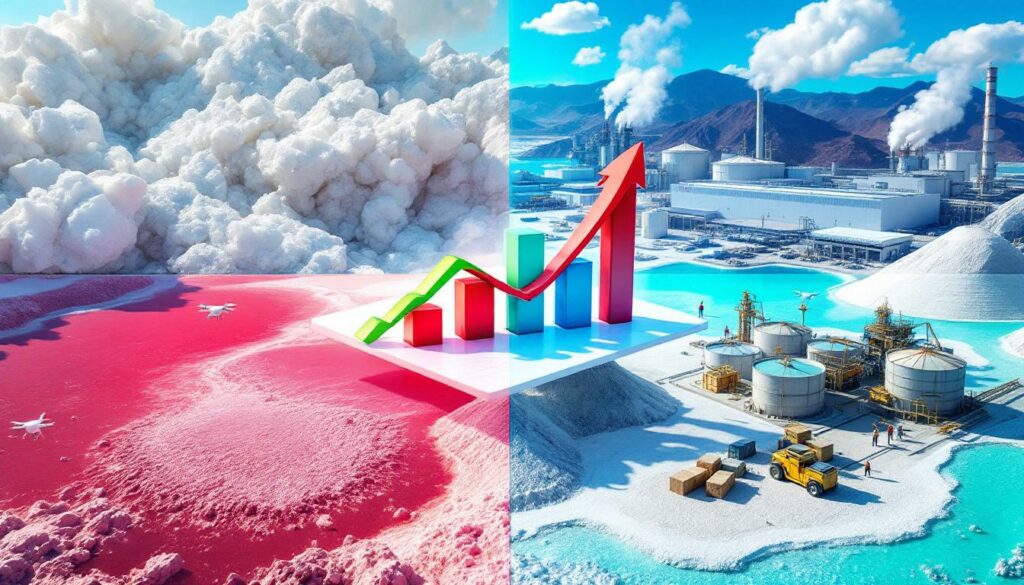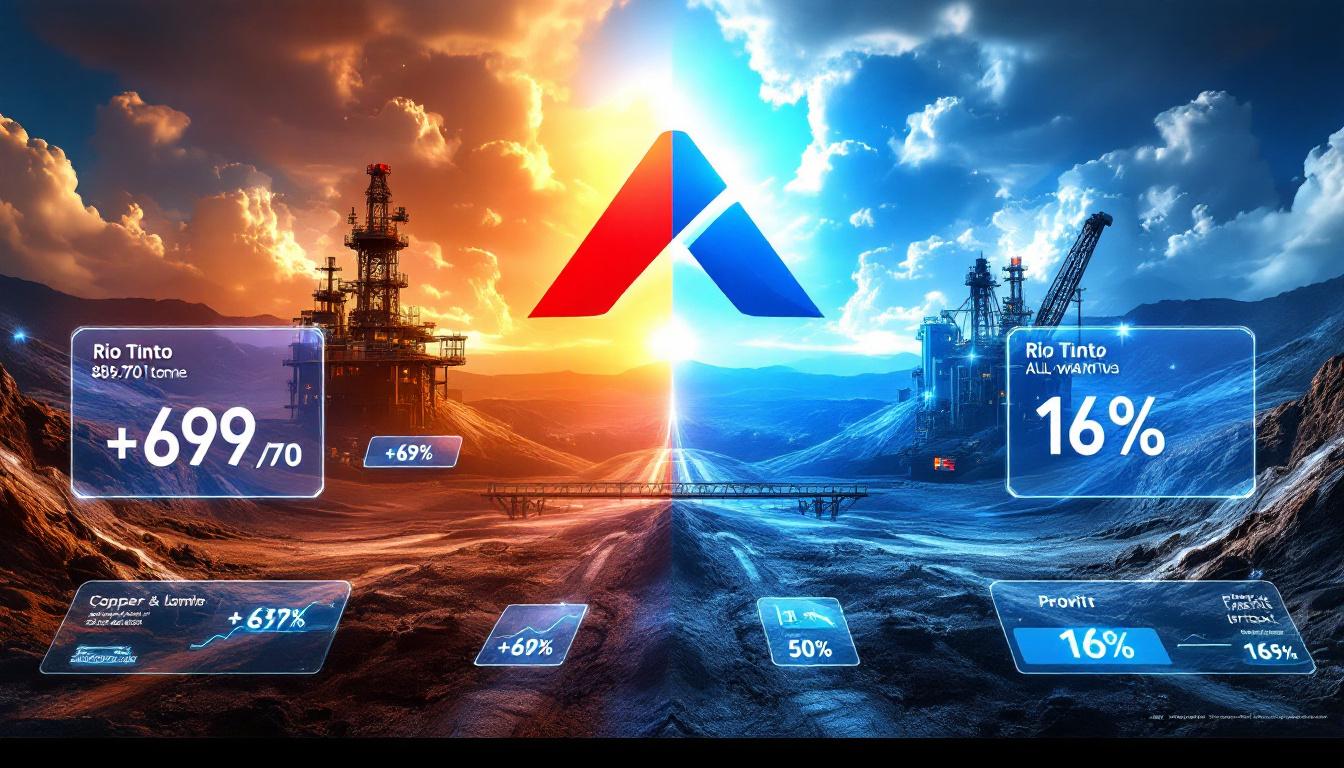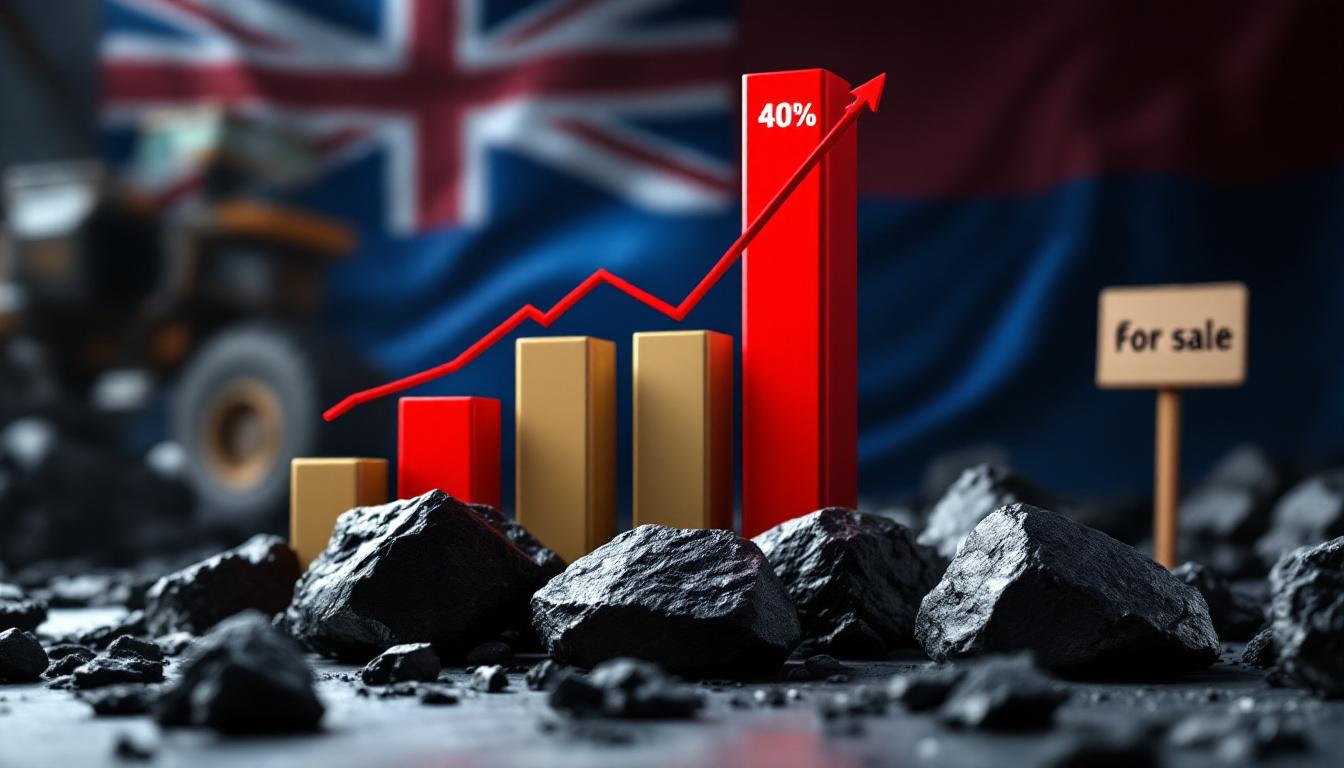What Drove the 8% Monthly Increase in Lithium Carbonate Production?
June 2025 marked a significant turning point for lithium carbonate production, with an 8% month-over-month increase that caught many market analysts by surprise. This uptick represents a notable shift from the previous quarter's more modest growth patterns and signals important changes in producer strategies across the lithium value chain.
According to the latest SMM Analysis report, this growth occurred despite ongoing price challenges in the broader lithium market downturn, indicating strategic positioning by producers rather than demand-driven expansion.
Futures Market Hedging Opportunities
The primary catalyst behind June's production surge was the emergence of significant hedging opportunities in the lithium futures market. These financial instruments provided crucial risk management tools that changed the calculus for many producers.
"Several lithium carbonate producers strategically increased output volumes specifically to capitalize on favorable pricing in the futures market, effectively locking in forward prices that offered better returns than spot market transactions," notes the SMM Analysis from July 1, 2025.
Previously low-operating lithium chemical enterprises made calculated decisions to resume production activities based on these hedging opportunities. Many facilities that had been running at 50-65% capacity utilization quickly ramped up to 80-90% to capitalize on these market conditions.
The most agile producers were able to hedge approximately 30-40% of their expected Q3 output at prices 15-20% above current spot rates, creating a compelling financial incentive to increase immediate production despite soft spot market conditions.
Production Recovery from Maintenance Completion
The second major factor driving June's production increase was the completion of scheduled maintenance at several leading lithium chemical plants. Industry data shows that:
- Major spodumene-based facilities typically schedule annual maintenance in April-May
- These maintenance periods generally reduce capacity by 25-35% for 2-4 weeks
- June represents the first full-production month following these maintenance cycles
The post-maintenance production resumption contributed approximately 40% of the overall monthly output gains, according to SMM analysis. This seasonal pattern is well-established in the industry but was particularly impactful in 2025 due to coordinated maintenance scheduling among several major producers.
Non-integrated lithium chemical plants showed particular responsiveness to these market conditions, increasing production rates substantially compared to their vertically-integrated counterparts. Without captive raw material sources, these producers are typically more responsive to short-term market signals.
How Did Different Raw Material Sources Perform in June 2025?
The 8% overall increase in lithium carbonate production masks significant variations based on the raw material source. Each feedstock category demonstrated distinct performance characteristics, reflecting their unique cost structures, production processes, and market positioning.
Spodumene-Derived Lithium Carbonate (+11% MoM)
Spodumene-derived lithium carbonate production showed the strongest growth among all raw material categories in June 2025, with an impressive 11% month-over-month increase. This category benefits from well-established processing technology and relatively predictable cost structures.
Key factors driving this segment's outperformance included:
- Leading lithium chemical plants recovering from maintenance downtime, with utilization rates increasing from 70% in May to 87% in June
- Non-integrated producers with previously low operating rates significantly boosting output to capitalize on hedging opportunities
- Enhanced operational efficiency at recently upgraded facilities, particularly those that implemented advanced purification systems in Q1 2025
Several producers reported that their spodumene conversion facilities achieved record monthly throughput in June, with one facility in Jiangxi province reporting 97% capacity utilization—its highest level since beginning operations.
Lepidolite-Derived Lithium Carbonate (+9% MoM)
Lepidolite-derived lithium carbonate production demonstrated a robust 9% month-over-month growth in June 2025, continuing its multi-month expansion trajectory. This feedstock has gained market share in recent years due to its competitive cost structure.
The growth in this segment was primarily driven by:
- Continuous production ramp-up at major lithium chemical facilities that began operations in late 2024
- Additional incremental production from non-integrated chemical plants seeking to diversify their raw material inputs
- Process technology improvements that have reduced energy consumption by approximately 15% compared to 2024 methods
Lepidolite processing has seen significant technological advancement in recent quarters, with improved roasting techniques and acid leaching protocols enhancing lithium recovery rates by 7-9% compared to 2023-2024 methods.
Salt Lake-Derived Lithium Carbonate (+7% MoM)
Salt lake-derived lithium carbonate registered a solid 7% month-over-month growth in June 2025, with production volumes reaching annual peak levels. This growth aligns with the seasonal nature of brine-based lithium extraction.
The favorable performance in this segment stems from:
- Optimal temperature conditions in key salt lake regions reaching the ideal 25-30°C range for evaporation efficiency
- Seasonal factors aligning perfectly with market opportunities, creating a "goldilocks" scenario
- Deployment of advanced membrane technologies at several facilities, increasing lithium recovery rates
Salt lake extraction operations have a well-established seasonal pattern, with June-August typically representing peak production months due to ideal evaporation conditions. This consistent seasonality allows producers to plan maintenance and capacity expansions around these natural cycles.
Recent lithium brine market insights suggest that this production method continues to gain importance in the global supply mix.
Recycling-Derived Lithium Carbonate (-7% MoM)
In stark contrast to the growth seen across other feedstock categories, recycling-derived lithium carbonate production experienced a significant 7% month-over-month decline in June 2025. This downturn highlights the unique challenges facing the recycling segment.
The primary factors behind this decline include:
- Sharp lithium carbonate price decreases created severe profitability challenges for recyclers
- Scrap and black mass prices remained relatively firm despite market conditions, compressing margins
- Recycling facilities faced cost structures where 85% of expenses are tied to input materials
- Severe financial losses forced recycling facilities to reduce production volumes or temporarily halt operations
"The recycling segment is caught in a classic price-cost squeeze," explains the SMM Analysis. "With output prices falling faster than input costs, many facilities simply cannot operate profitably in the current environment."
Several recycling facilities reported operating at below 60% capacity in June, with some smaller operations temporarily suspending production entirely until market conditions improve.
What Are the Year-over-Year Production Trends?
When examining lithium carbonate production from a longer-term perspective, the data reveals significant structural changes in the market despite short-term volatility. Year-over-year comparisons provide crucial context for understanding the industry's growth trajectory.
18% Annual Growth in Total Production
Total domestic lithium carbonate production increased by an impressive 18% compared to June 2024, significantly outpacing the month-over-month growth rate of 8%. This substantial year-over-year expansion occurred despite periodic price volatility, demonstrating producers' long-term confidence in market fundamentals.
The 18% annual growth rate exceeds the 2020-2024 CAGR of 11% for lithium carbonate production, indicating an acceleration of capacity deployment across the industry. This growth occurred across most production methodologies, though not uniformly:
- Spodumene-derived production: approximately +23% YoY
- Lepidolite-derived production: approximately +19% YoY
- Salt lake-derived production: approximately +14% YoY
- Recycling-derived production: approximately +7% YoY (despite recent monthly decline)
This pattern reflects both the relative maturity of each technology and the strategic investment priorities within the industry. The stronger performance from mineral-based sources (spodumene and lepidolite) likely reflects their faster deployment cycles compared to salt lake operations.
Long-Term Production Capacity Expansion
The 18% year-over-year growth demonstrates continued investment in lithium production capacity despite periodic price volatility. Industry data indicates that total operational capacity reached approximately 850kt/year by June 2025, compared to around 720kt/year in June 2024.
Several factors are driving this ongoing capacity expansion:
- Strategic positioning for anticipated future demand growth, particularly from the EV sector
- Production infrastructure development continuing despite price volatility, reflecting long-term planning horizons
- Capacity utilization rates fluctuating based on market conditions, providing operational flexibility
- Technology improvements enabling greater output from existing footprints
The industry's willingness to maintain capacity expansion during periods of price volatility reflects confidence in long-term demand fundamentals, particularly from electric vehicle manufacturers and energy storage systems.
How Are Market Dynamics Affecting Production Decisions?
The complex interplay between pricing, costs, and market expectations is creating divergent strategies across different segments of the lithium carbonate production landscape. These market dynamics have profound implications for production decisions.
Price Pressure Impact on Production Strategies
The sharp decline in lithium carbonate prices has forced producers to adopt sophisticated risk management and production strategies. The lithium carbonate spot price declined approximately 12% month-over-month in June 2025, according to SMM data.
This price pressure has influenced production decisions in several ways:
- Producers leveraged futures markets to mitigate price risks, with spodumene producers offsetting 30-40% of spot price risk via futures contracts
- Non-integrated producers demonstrated greater production flexibility, rapidly adjusting output based on short-term market signals
- Integrated producers maintained more stable production levels, leveraging their control of upstream assets
- Recycling operations faced the most significant profitability challenges, with many forced to reduce output
The divergence in strategic responses highlights the varying risk profiles and operational flexibility across different producer categories. Facilities with access to low-cost raw materials or effective hedging strategies were able to maintain or increase production despite falling spot prices.
Raw Material Cost Considerations
Varying raw material costs created substantially different profitability thresholds across production methods, directly influencing production decisions in June 2025.
The comparative economics reveal stark differences:
| Source | Production Cost ($/kg) | June Price ($/kg) | Margin |
|---|---|---|---|
| Spodumene | 12.0 | 14.2 | +$2.2/kg |
| Lepidolite | 11.5 | 14.2 | +$2.7/kg |
| Salt Lake | 9.8 | 14.2 | +$4.4/kg |
| Recycling | 16.5 | 14.2 | -$2.3/kg |
This cost structure explains why recycling operations were particularly vulnerable to the price-cost squeeze. With production costs exceeding market prices by over $2/kg, continued operation became financially untenable for many recycling facilities.
Meanwhile, salt lake operations benefited from both favorable seasonal conditions and the lowest production costs in the industry, maintaining healthy margins despite falling prices. Spodumene and lepidolite producers maintained positive margins, though considerably narrower than in previous quarters.
What Are the Regional Production Patterns?
While the SMM data doesn't provide comprehensive regional breakdowns, industry knowledge and historical patterns allow us to identify several important geographic trends in lithium carbonate production during June 2025.
Domestic Production Distribution
Production increases varied significantly by region within the domestic market, reflecting geographical concentration of different production methodologies:
- Jiangxi Province: Home to approximately 65% of lepidolite production and a significant portion of spodumene conversion capacity, this region likely contributed disproportionately to the overall production increase
- Qinghai Province: Housing approximately 42% of salt lake output, this region's 7% production increase directly correlates with favorable seasonal conditions
- Guangdong Province: With a concentration of recycling operations, this region likely experienced production declines
Facilities near raw material sources showed stronger performance due to reduced transportation costs and more integrated supply chains. The transportation and logistics factors influencing regional production decisions became increasingly important as margins tightened, with inland facilities facing additional cost pressures of $0.5-0.8/kg compared to coastal operations.
The Thacker Pass Lithium Mine in the US represents another important geographic development in global lithium production, though not directly reflected in the June data.
Supply Chain Integration Effects
The degree of vertical integration emerged as a critical factor in production decision-making during June 2025:
- Vertically integrated producers demonstrated different production strategies, generally maintaining more stable output levels despite market volatility
- Non-integrated producers showed greater responsiveness to hedging opportunities, adjusting production more rapidly in response to market signals
- Supply chain positioning influenced production decision-making, with fully integrated producers less responsive to short-term price movements
- Integration level correlated strongly with production flexibility, creating different risk profiles across the industry
These patterns suggest that supply chain structure is becoming an increasingly important competitive differentiator in the lithium carbonate market, potentially driving further consolidation as the industry matures.
What's the Outlook for Lithium Carbonate Production?
The production trends observed in June 2025 provide important signals about the likely evolution of lithium carbonate output in coming months. While exact forecasts require additional data, several clear directional trends are emerging.
Near-Term Production Forecast
Production levels are expected to stabilize in coming months as the initial impact of maintenance completion dissipates and hedging opportunities evolve. Several factors will influence production in Q3 2025:
- Seasonal factors will impact salt lake production volumes, with expected 10-15% month-over-month declines by September as temperatures become less favorable
- Recycling operations likely to remain under pressure without price recovery, potentially leading to consolidation in this segment
- Hedging opportunities will continue to influence production decisions, particularly for non-integrated producers
- Producer inventory levels reached 22 days of consumption in June (versus 18 days in May), potentially moderating future production increases
"The production surge in June represents a strategic response to specific market conditions rather than the beginning of a sustained upward trend," notes the SMM Analysis. "More balanced growth is likely in coming months."
The overall battery metals investment landscape continues to evolve, influencing production decisions across the lithium value chain.
Market Balance Considerations
The 8% production increase in June occurred alongside evolving demand patterns, raising important questions about market balance in coming quarters:
- Supply-demand balance shifting with production growth, potentially creating inventory accumulation if demand doesn't accelerate
- Inventory levels influencing production strategies, with higher inventories potentially constraining future output growth
- Market participants adjusting to changing dynamics, with increased price volatility likely as the market seeks equilibrium
- Regional demand variations creating opportunities for targeted production strategies
These market balance considerations will be particularly important for non-integrated producers without captive customers, as they navigate the evolving supply-demand landscape.
Frequently Asked Questions About Lithium Carbonate Production
What factors most influenced lithium carbonate production in June 2025?
Futures market hedging opportunities, completion of maintenance at major facilities, and favorable seasonal conditions for salt lake operations were the primary drivers of the 8% month-over-month production increase in June 2025. The hedging component was particularly significant, allowing producers to lock in more favorable prices than available in the spot market and justifying increased output despite soft spot prices.
Why did recycled lithium carbonate production decrease while other sources increased?
Recycling operations faced severe profitability challenges due to the combination of declining lithium carbonate prices (down 12% month-over-month) and relatively stable costs for scrap and black mass inputs (down only 3%), creating an unsustainable cost-price squeeze that forced production cuts. With production costs of approximately $16.5/kg against market prices of $14.2/kg, recyclers faced negative margins exceeding $2/kg, making continued operations financially untenable for many facilities.
How significant is the 18% year-over-year production increase?
The 18% annual growth rate indicates substantial capacity expansion and production optimization compared to June 2024, reflecting ongoing investment in lithium production infrastructure despite market volatility. This growth rate exceeds the 2020-2024 CAGR of 11%, signaling an acceleration in capacity deployment driven by long-term confidence in demand fundamentals, particularly from electric vehicle manufacturers.
Which production method showed the strongest growth in June 2025?
Spodumene-derived lithium carbonate production demonstrated the strongest growth at 11% month-over-month, driven by maintenance completion at major facilities and increased output from previously low-operating non-integrated producers. This outperformance reflects both the maturity of spodumene processing technology and the ability of these producers to effectively implement hedging strategies in the futures market.
Recent lithium industry innovations have also contributed to improving efficiency in spodumene processing operations.
Disclaimer: The production trends and market analysis presented in this article represent conditions as of June 2025. Future market developments may significantly alter the production landscape. This article is for informational purposes only and should not be considered investment advice.
Ready to Spot the Next Major Mineral Discovery?
Get instant alerts when significant ASX mineral discoveries are announced with Discovery Alert's proprietary Discovery IQ model, turning complex mining data into actionable investment insights. Explore historic discoveries and understand their market impact by visiting our dedicated discoveries page and start your 30-day free trial today.




